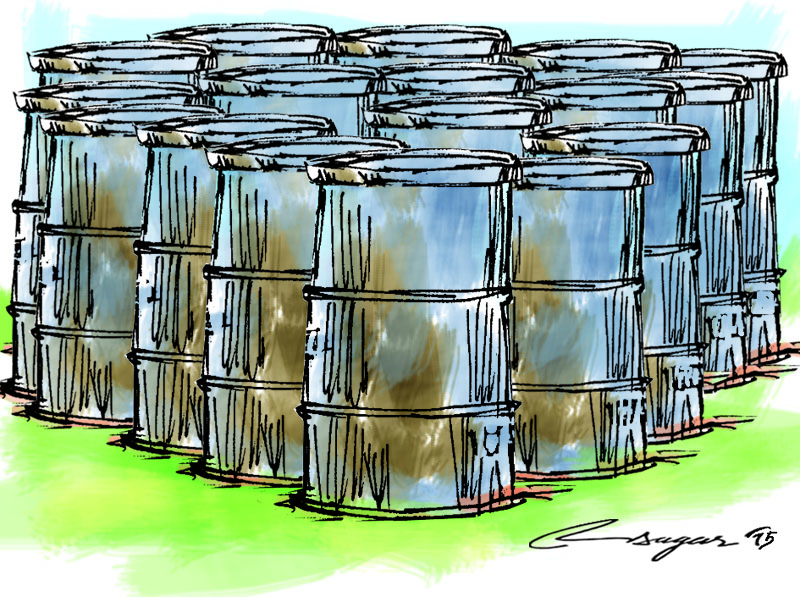Saudi Arabia: The kingdom beyond oil
Over the past few weeks, the government of Saudi Arabia has been engaged in an unprecedented strategic policy review that could have ramifications for every aspect of the country’s social and economic life. The full details are expected to be announced in January, but it is already clear that the kingdom – the world’s nineteenth-largest economy – is in desperate need of far-reaching reform.
There are two reasons why change has become urgent. The first is the dramatic drop in global oil prices, from above $100 per barrel in the middle of 2014 to below $40 today. With oil exports accounting for nearly 90% of government revenue, the pressure on Saudi finances has been intense; the fiscal balance has swung from a small surplus in 2013 to a deficit of more than 21% of GDP in 2015, according to projections by the International Monetary Fund.
The second reason is demographic. In the next 15 years, some six million young Saudis will reach working age, putting enormous pressure on the labor market and potentially doubling its size.
It is easy to be pessimistic about this confluence of circumstances, and many international commentators are. But there are also good reasons for optimism, most notably the new Saudi leadership’s recognition of the challenge and the possibilities that addressing them could create.
According to research by the McKinsey Global Institute, Saudi Arabia has the potential to double its GDP and create six million
additional jobs by 2030, enough to absorb the influx of young men – and,
increasingly, young women – entering the labor market. To accomplish this however, the kingdom will have to dramatically reduce its unhealthy dependence on oil – a strategic goal that has been long discussed, but never implemented.
Saudi Arabia has many sectors with strong potential for expansion. The country has substantial untapped deposits of metals and non-metallic minerals, including phosphate, gold, zinc, bauxite, and high-quality silica. Its retail sector is already growing quickly, but it lags behind in areas like e merchandizing and supply-chain efficiencies.
The country’s tourism sector could be developed and upgraded, not only for the millions of Muslim pilgrims who visit the holy sites of Mecca and Medina every year, but also for leisure tourists. Saudi Arabia has a long coastline on the Red Sea, as well as other unspoiled areas of natural beauty that could attract visitors. The manufacturing sector, too, could be built up; at the moment, the kingdom has only small-scale domestic manufacturing, despite being one of the largest markets in the region for cars, machinery, and other capital goods.
Exploiting these opportunities will require trillions of dollars in investment, radical improvements in productivity, and the government’s firm, sustained commitment. Doubling GDP over the next 15 years will necessitate about $4 trillion in investment, two-and-a-half times the amount of money that flowed into the kingdom’s economy during the 2003-2013 oil boom.
Attaining this level of investment will require radical policy reforms. During the oil boom, the state increased public-sector wages and social-welfare transfers – and thus was a major contributor to households’ growing prosperity. The public sector continues to dominate most aspects of the economy, especially employment; about 70% of Saudi nationals work for the state.
It will also require large improvements in productivity. Saudi Arabia’s productivity growth has lagged behind that of most other G-20 countries, rising by just 0.8% in the past decade. Jump-starting productivity growth will require reworking the kingdom’s restrictions on business and labor practices. For now, the Saudi economy relies heavily on low-wage and low-productivity foreign workers on limited contracts; indeed, such workers hold more than half the jobs in the country. That will have to change if the economy is to raise productivity and modernize its non-oil sectors.
The kingdom’s new leadership has some difficult but important choices to make as it formulates a detailed economic strategy. The most important priorities include boosting the efficiency of government spending and developing new sources of revenue to replace oil exports.
The government has a number of options for new revenue, including a reform of wasteful energy subsidies and the introduction of levies that are standard in the G-20, such as value-added tax.
Weaning Saudi Arabia’s economy off oil will not be easy, and the kingdom has an uneven track record in this regard. But there are encouraging early signs about the government’s focus, energy, and determination. One is the recent decision to levy a tax on unused land that could be developed for housing. Another is the new inter-ministerial coordination and cooperation that appears to be taking place under the auspices of the Council of Economic and Development Affairs, a body established in January 2015. If the government is able to sustain its resolve over the years it will take to set the economy firmly on a new trajectory, the kingdom will be thoroughly transformed – for the better.
Al-Kibsi is Managing Director of McKinsey & Company, Saudi Arabia.
© Project Syndicate, 2015






